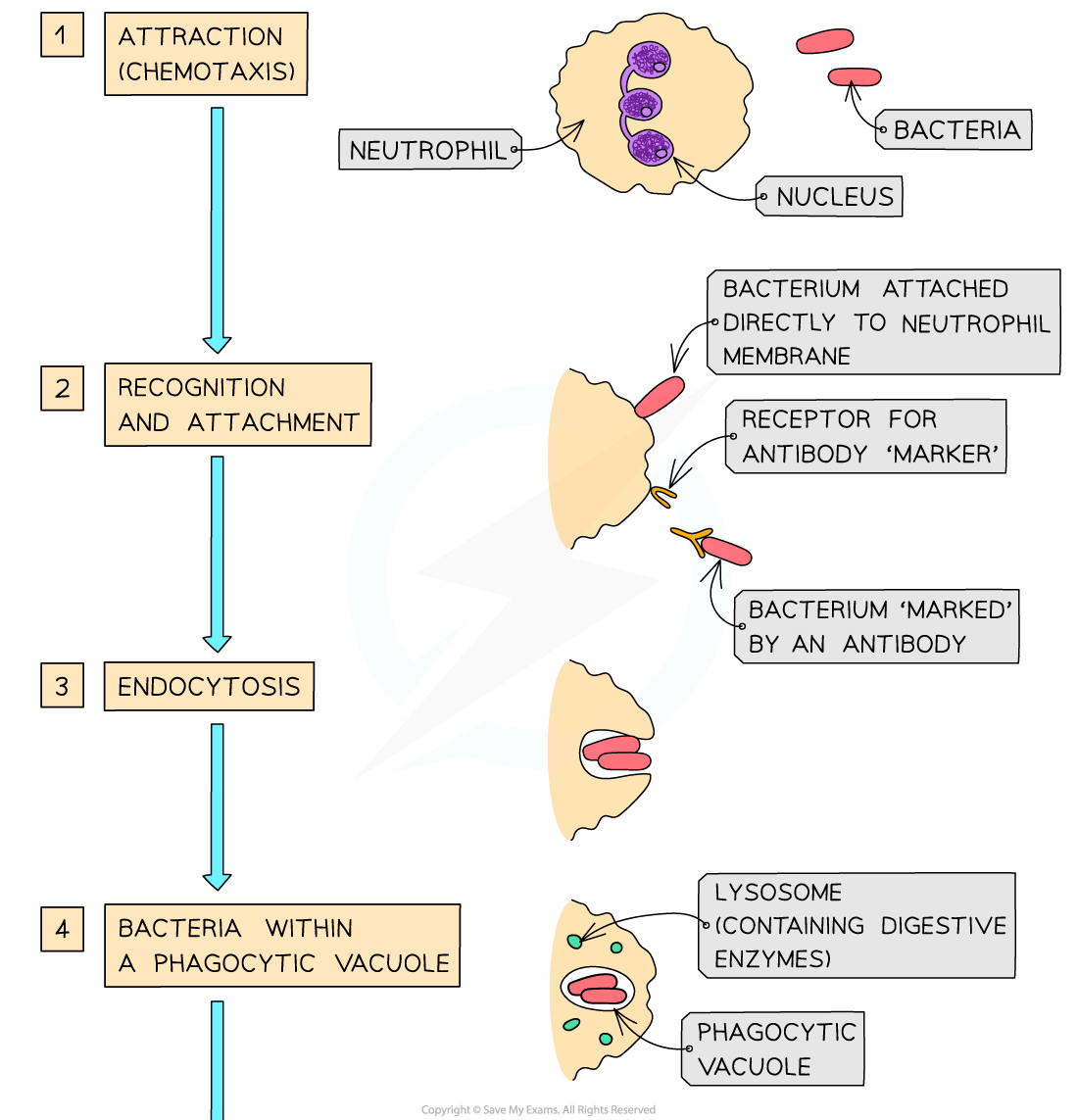Phagocytes (Cambridge (CIE) AS Biology): Revision Note
Exam code: 9700
Phagocytes: origin & mode of action
Phagocytes are white blood cells that are produced continuously in the bone marrow
They are stored in the bone marrow before being distributed around the body in the blood
They are responsible for removing dead cells and invasive microorganisms
They carry out what is known as a non-specific immune response
There are two main types of phagocyte, each with a specific mode of action. The two types are:
Neutrophils
Macrophages
Phagocytes carry out phagocytosis
Neutrophils
Neutrophils are short-lived cells that travel throughout the body and often leave the blood by squeezing through capillary walls to ‘patrol’ the body tissues
During an infection they are released in large numbers from their stores
Neutrophils carry out phagocytosis as follows:
Chemicals released by pathogens, as well as chemicals released by the body cells under attack, e.g. histamine, attract neutrophils to the site where the pathogens are located
This response to chemical stimuli is known as chemotaxis
Neutrophils move towards pathogens
Receptor proteins on the surface of neutrophils attach to antigens on the surface of pathogens
Once attached to a pathogen, the cell surface membrane of a neutrophil extends out and around the pathogen, engulfing it and trapping the pathogen within a phagocytic vacuole
This is an example of endocytosis
The neutrophil then secretes digestive enzymes into the vacuole
This occurs when the phagocytic vacuole, also known as the phagosome, fuses with a lysosome
The fused phagosome and lysosome are referred to as a phagolysosome
These digestive enzymes destroy the pathogen
After killing and digesting the pathogens, the neutrophils die
Pus is a sign of dead neutrophils


Macrophages
Macrophages are larger than neutrophils and are long-lived cells
Rather than remaining in the blood they move into organs
E.g. the lungs, liver, spleen, kidney and lymph nodes
After being produced in the bone marrow, macrophages travel in the blood as monocytes, which then develop into macrophages once they leave the blood to settle in the various organs listed above
Macrophages play a role in initiating a specific immune response as follows:
Macrophages carry out phagocytosis as described above, but they do not destroy pathogens completely during the digestion stage of the process
They cut the pathogens up so that they can display the antigens of the pathogens on their surface
Macrophages that present antigens in this way are known as antigen presenting cells
These displayed antigens can then be recognised by lymphocytes, another group of white blood cells
Examiner Tips and Tricks
Remember that while neutrophils and macrophages both carry out phagocytosis, only macrophages become antigen presenting cells that initiate the specific immune response

Unlock more, it's free!
Did this page help you?